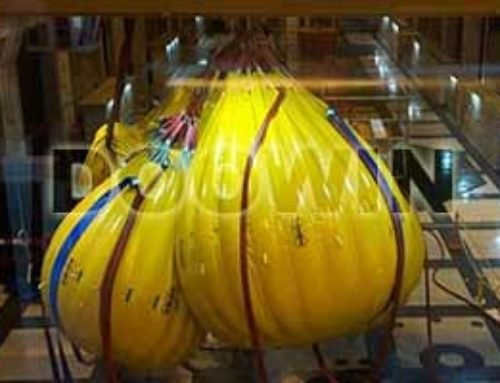Crane load testing is a critical procedure that ensures the safety and reliability of lifting equipment. One effective method for conducting load tests is using load test water weight bags. This article will guide you through the process of performing crane load testing with DOOWIN load testing water bags, highlighting the necessary preparations, procedures, and safety considerations.
Understanding Crane Load Testing
Crane load testing is performed to verify that a crane can safely lift and handle loads within its rated capacity. This testing is essential for compliance with safety regulations and to prevent accidents in the workplace. We can do load testing using various methods, and water weight bags are a popular choice due to their ease of use and safety.
Why Use Water Weight Bags?
Water weight bags offer several advantages for load testing:
1. **Adjustable Weight**: Water can be added or removed to achieve the desired weight, allowing for precise load adjustments.
2. **Safety**: Water bags are less hazardous than traditional weights, as they are less likely to cause damage or injury if dropped.
3. **Cost-Effective**: Water is readily available and inexpensive if compare with other weight options.
4. **Ease of Handling**: Water weight bags are easier to maneuver and position than solid weights.
Equipment Needed
Before starting the load testing process, gather the following equipment:
1. **Water Weight Bags**: Ensure they are rated for the weight you intend to test.
2. **Crane**: The crane being tested, equipped with appropriate rigging.
3. **Water Source**: A hose or other means to fill the bags with water.
4. **Measuring Equipment**: A scale or load cell to measure the weight being lifted.
5. **Safety Gear**: Hard hats, gloves, and other personal protective equipment (PPE).
6. **Communication Devices**: Radios or other means to communicate with the crane operator.
Step-by-Step Procedure
Step 1: Preparation
1. **Inspect the Crane**: Before testing, conduct a thorough inspection of the crane, including its rigging, hooks, and safety devices.
2. **Select a Safe Location**: Choose a testing area that is clear of obstacles and personnel. Ensure the ground is stable and capable of supporting the crane and load.
3. **Prepare Water Weight Bags**: Fill the water weight bags to the desired weight, ensuring they are securely sealed and free from leaks.
Step 2: Setting Up the Test
1. **Attach the Water Weight Bags**: Use appropriate rigging to attach the water weight bags to the crane hook. Ensure that the rigging is rated for the total lifting weight.
2. **Check Load Distribution**: Ensure that the weight is evenly distributed and that the bags are securely fastened to prevent shifting during the lift.
Step 3: Conducting the Load Test
1. **Communicate with the Operator**: Establish clear communication with the crane operator before starting the lift.
2. **Lift the Load**: Gradually lift the water weight bags off the ground, monitoring the crane’s performance. Pay attention to any unusual sounds or movements.
3. **Hold the Load**: Once the bags are lifted to the desired height, hold the load for a specified duration (usually 5-10 minutes) to observe the crane’s stability and performance.
4. **Lower the Load**: Carefully lower the water weight bags back to the ground, ensuring a controlled descent.
Step 4: Post-Test Procedures
1. **Inspect the Crane**: After the test, conduct a thorough inspection of the crane and rigging to identify any signs of wear or damage.
2. **Document the Results**: Record the test results, including the weight lifted, duration of the hold, and any observations made during the test.
3. **Remove Water Weight Bags**: Safely detach and empty the water weight bags, ensuring they are cleaned and stored properly for future use.
Safety Considerations
– Always follow manufacturer guidelines and industry standards for load testing.
– Ensure that all personnel are trained and aware of the testing procedures.
– Maintain a safe distance from the crane during the lift and hold phases.
– Use appropriate PPE to protect against potential hazards.
Conclusion
Crane load testing with water weight bags is an effective and safe method to ensure the reliability of lifting equipment. By following the outlined procedures and prioritizing safety, you can conduct load tests that help maintain a safe working environment. Regular load testing not only complies with regulations but also enhances the overall safety and efficiency of crane operations.





